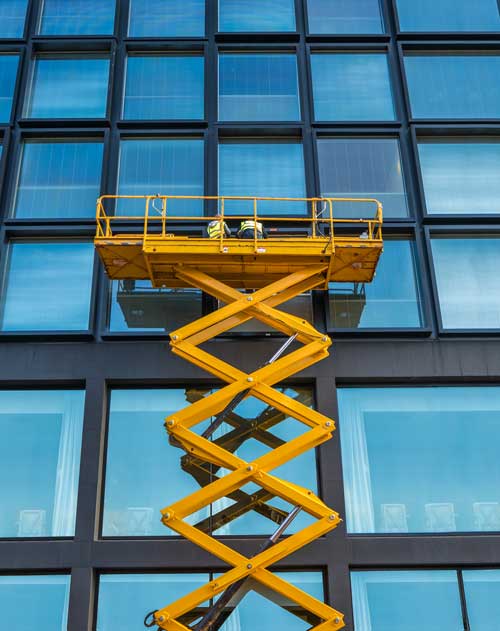Redesigning to Comply with ANSI A92? HARTING Can Help.
Changes are coming to the standards governing the design and usage of aerial lifts according to the American National Standards Institute (ANSI). The standard that specifically governs aerial lifts is ANSI A92. Over the past two years, a standards committee has worked to address the design of new aerial lift equipment as well as the training operators, supervisors, and maintenance people must receive.
Quick Overview of the Changes Under ANSI A92
The first change is the way that aerial lifts are classified. First, the term aerial lift will be changed to Mobile Elevating Work Platforms (MEWPs). Furthermore, MEWPs will be divided into two classes:
- Group A: Scissor lifts and vertical lifts where the center of the work platform remains within the chassis at all times.
- Group B: Boom lifts where the center of the work can be positioned beyond the chassis.
Type 1
Type 1, which can travel only in stowed positions and moves manually.
Type 2
Type 2, which are controlled from the chassis and can be driven while in the elevated position.
Type 3
Type 3, which can drive while elevated and which have controls on the work platform.
Changes in Equipment Design:
The design of new MEWPs will be changed as a result of ANSI A92. All changes to the ANSI A92 will go into effect in December 2019.
- Aerial lifts/MEWPs will have incorporated sensors that sound an alarm and prevent machine operation when the safe load limit is exceeded.
- Machinery must include a tilt sensor that triggers alarms and prevents movement when slope limit is exceeded.
- Outdoor equipment will need sensors that monitor wind speeds to reduce load capacities in windy conditions.
- Air tires will no longer be allowed in rough terrain scissor lifts or booms. Instead, these tires need to be foam-filled.
- Chain entrances are no longer acceptable
Redesign with Ease of Use and the Future in Mind by Using Industrial Connectors
New standards move the world forward, but they do make a lot of work for those manufacturers who must comply. The new changes to ANSI A92 is resulting in significant redesigns in the aerial lift industry. Many manufactures who now need to redesign are looking for ways to comply as well as make the aerial lifts more convenient by simplifying maintenance and assembly.
One way many are doing this is by replacing hardwired connections with industrial connectors. Hardwiring is an outdated technology where individual wires are terminated directly to the device. Whenever assembly or maintenance is needed, a skilled electrician must painstakingly disconnect and reconnect each wire, which often results in miswiring. This is expensive and time consuming. Adding a connector offers a quick and easy connect/disconnect. When a lift is assembled, the process is quick and does not require specialized labor. The same is true during maintenance, where a new connector assembly can be swapped with the older one.
Another way aerial lift manufacturers are looking to connectors is futureproofing. Modular connectors provide customizable building blocks for mixing power, signal, and data in a single connection point. The connector provides a standardized cutout for the connector and connections inside the connector can be swapped out as needs change. Placeholder modules can also be used to hold a space for future developments. This simplifies the design process because manufacturers can simply replace modules rather than having to start at square one with many different connection points.

